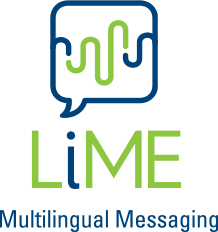You have the power to make a positive change.
As a business serving a diverse audience, engaging with clients from non-English speaking backgrounds presents unique opportunities and challenges.
You strive to build rapport and understanding, but language and cultural barriers can complicate the process. However, with some thoughtful strategies, you can connect authentically across differences.
This article explores three researched-backed approaches for forging strong client relationships regardless of language fluency. Drawing from cross-cultural communication principles and best practices in fields like healthcare and education, it provides practical guidance tailored for professionals in Australia.
Research shows implementing multilingual marketing materials increases revenue. Providing translation services and hiring multilingual staff improves client satisfaction. Celebrating cultural holidays and traditions fosters an inclusive environment. Small adjustments to your communications and business practices make a big difference.
With care, creativity, and cultural sensitivity, you can engage meaningfully with all clients to understand their needs and deliver your best work. The strategies discussed aim to foster mutual understanding and long-lasting partnerships that allow your business to thrive in our multicultural society.
Bridging the Language Gap and Why Communication Matters
Australia is a culturally diverse country, with nearly half of Australians either born overseas or having at least one parent born overseas. This diversity brings richness to Australian society, but it also challenges businesses looking to engage clients from non-English speaking backgrounds.
 Effective communication is key to building trust and long-term relationships with these clients. According to a study by TNS Australia, 62% of CALD consumers feel businesses need to do a better job of communicating with them due to language and cultural barriers.
Effective communication is key to building trust and long-term relationships with these clients. According to a study by TNS Australia, 62% of CALD consumers feel businesses need to do a better job of communicating with them due to language and cultural barriers.
Another study by Common Sense Advisory says that nearly $50 billion is lost each year due to language barriers and poor communication in international business.
For businesses in culturally and linguistically diverse Australia, ensuring clear communication across languages and cultures is crucial, and embracing diversity and fostering inclusion are good for business.
By bridging language gaps, promoting cultural competence, and providing accessible multilingual content, you’ll be well on your way to engaging and serving clients from all backgrounds. Focusing on effective communication and building trust will lead to a loyal, diverse customer base and a thriving business.
Building Trust and Rapport with Clients
To build trust and rapport with clients from non-English speaking backgrounds, focus on communication, cultural sensitivity, transparency, and Flexibility.
According to a study by the Federation of Ethnic Communities’ Councils of Australia, nearly half of Australians were born overseas or had a parent who was. With such a diverse population, it is crucial for businesses to establish genuine connections across cultures.
Clear communication
Use professional interpreters and translators to ensure your message is understood. All Graduates, for example, provide NAATI-certified linguists in over 100 languages. With the help of interpreters, you can have nuanced conversations to understand your client’s needs and build rapport.
You should also consider providing key documents in your clients’ first languages. Translating essential information like contracts, terms and conditions, and product details demonstrates your commitment to accessible communication.
Cultural sensitivity
Educate yourself and your staff on cultural norms and expectations. Do research on the cultural backgrounds of your target clients and adjust your communication style accordingly.
Cultural sensitivity also means using inclusive language and visuals that represent diversity. Choose marketing materials, for example, that feature people from a range of ethnicities.
Transparency
Explain your services and processes clearly. This is especially important for new migrant communities who may be unfamiliar with certain business practices. Be open about fees, timeframes, and requirements to avoid confusion or feelings of exploitation.
Flexibility
Understand that non-English speaking clients may have different cultural expectations regarding punctuality, negotiation styles, and more. Work with them to find a compromise that suits you both. Accommodating cultural differences and being willing to adapt your business practices demonstrates your commitment to inclusion and builds goodwill.
By prioritizing communication, cultural sensitivity, transparency, and flexibility you can gain the trust of clients from non-English speaking backgrounds and build lasting relationships. With nearly half the population from overseas, embracing diversity and inclusion is key to success in business.
Strategy 1 – Embrace Multilingual Communication
Communicating with clients in their native language shows your commitment to inclusiveness and building strong relationships.
In a study conducted by Common Sense Advisory, 75% of consumers prefer to buy products in their native language. In another research from Deloitte, 62% of companies believe that supporting multiple languages is important for customer engagement.
As business becomes increasingly global, adopting a multilingual communication strategy is crucial to connect with diverse clients and gain a competitive advantage.
Tap into the Power of Translation
Hiring multilingual staff or working with professional translation services allows you to communicate with clients in their native languages. According to a Common Sense Advisory study, 75% of consumers spend more when information is in their language. Translation opens you up to new markets and builds trust and loyalty with clients from non-English speaking backgrounds.
Go Visual
Using visuals is an effective way to overcome language barriers. According to Stanford research, our brain processes visual information 60,000 times faster than text.
Infographics, photos, illustrations, and videos are visual mediums that require little to no language to communicate messages. Create visual content to supplement or replace text, making information accessible to diverse language speakers.
Tailor Content
To resonate across cultures, tailor content to your audience’s needs and preferences. Do research on your target cultural groups to understand key values, interests, and communication styles. According to The Content Advisory, culturally tailored content leads to higher engagement rates. Tailor content by:
- Featuring culturally relevant images and examples
- Adjusting tone, formality, and complexity to match audience expectations
- Translating idioms and metaphors into culturally equivalent expressions
- Choosing colours and visuals with cultural significance
Offer Multilingual Support
Providing multilingual customer support options, such as phone support, chatbots, and online communities in multiple languages, enhances the client experience.
According to Microsoft, 65% of customers are more likely to make a purchase when support is in their language and Forbes said over 70% of global customers prefer to interact in their native language. Thus, multilingual support also conveys your commitment to diversity and inclusion.
Embracing multilingual communication through translation, visuals, tailored content, and support services allows you to connect with culturally diverse clients in meaningful ways.
By making an effort to speak your clients’ languages, both literally and figuratively, you gain a competitive advantage and build loyalty in an increasingly global market. Focusing on multilingual strategies will open you up to new opportunities and help your business thrive.
Strategy 2 – Foster A Welcoming And Inclusive Client Experience
Providing an inclusive experience for CALD clients should be a top priority for any business. According to a 2019 study, nearly half of Australians were born overseas or have at least one parent born overseas.
Tailoring Your Business
Tailoring your business to be inclusive of cultural diversity is key. This could include:
- Providing and Offering interpreters or translated materials for key client interactions. According to the Australian Bureau of Statistics, nearly 1 in 5 Australians speak a language other than English at home.
- Training staff on cultural competence and inclusive customer service. A 2018 report found that 15% of Australians from non-English speaking backgrounds faced discrimination in accessing goods and services.
Build Trust Through Cultural Sensitivity
Showing cultural sensitivity and understanding builds trust with CALD clients. Some suggestions include:
- Educating yourself on the cultural backgrounds and norms of your clients. For example, in some cultures, direct eye contact is seen as disrespectful.
- Using inclusive language and avoiding assumptions. Ask open-ended questions to learn about your client’s needs and preferences.
- Accommodating cultural or religious practices when possible, such as scheduling around important holidays or providing a space for prayer.
Personalised Service
With an increasingly globalised world, cultural diversity in Australia is growing rapidly. Tailoring your business’s approach to match each client’s unique cultural background and language needs is key because offering personalised service in a client’s preferred language leads to improved customer satisfaction, loyalty, and word-of-mouth promotion.
Providing personalised service tailored to clients’ needs makes them feel valued and understood. For CALD clients, this could include:
- Offering information in their preferred language. Providing interpreting or translated services shows you value clients and want to meet their needs.
- Gaining an understanding of cultural backgrounds and customs to serve clients respectfully. For example, in some cultures, it is customary to negotiate pricing or make important decisions as a family.
- Building rapport and trust over time through ongoing contact and high-quality service. CALD clients who feel understood and respected are more likely to become long-term, loyal customers.
Review Your Business Processes
Examine your current business processes with an inclusion lens. Are your marketing materials, website, and client forms available in languages other than English? Do you offer interpreter or translation services when needed? Are signs in your office easy to understand for non-native English speakers? Making simple changes to provide multilingual and accessible information can significantly improve the experience for CALD clients.
Build Partnerships
Partnering with local cultural groups and language service providers is an easy way to strengthen your cultural competency and connections within CALD communities.
All Graduates, for example, provide cultural awareness training, translations, and interpreting services to help businesses better serve their diverse clients. Collaborating with organizations that specialise in inclusion and diversity can help your business provide the best experience for all clients, regardless of cultural or linguistic background.
With Australia’s increasing cultural diversity, fostering an inclusive client experience is vital for any business.
Fostering an inclusive experience for your CALD clients is not only ethical but also good for your business. By tailoring your services, showing cultural sensitivity, and providing personalised interactions, you can build trust, gain client loyalty, and tap into an important consumer market.
The rewards of an inclusive approach far outweigh the effort. Your clients will appreciate your understanding and respect, and your business will thrive as a result.
 Tools such as social media, personalised communications via email or chat, and audio messaging can help you develop new relationships and nurture existing ones. The goal is to encourage a two-way dialogue where non-English speakers can engage in meaningful ways.
Tools such as social media, personalised communications via email or chat, and audio messaging can help you develop new relationships and nurture existing ones. The goal is to encourage a two-way dialogue where non-English speakers can engage in meaningful ways.
You can easily adapt and repurpose your existing communications. For instance, you could transform a brochure into a shareable audiogram or record your FAQs in another language accessible via a telephone message service.
Strategy 3 – Leverage Technology For Seamless Communication
According to a study by Common Sense Advisory, businesses lose $37 billion annually due to language barriers.
However, technology has made it easier than ever to overcome communication challenges. Leveraging multilingual communication technologies is a proven strategy to better engage clients from non-English speaking backgrounds.
Provide Interpretation Services
According to a study by the Australian Bureau of Statistics, nearly half of Australians were born overseas or have at least one parent born overseas. With Australia’s cultural diversity, providing interpretation services is key to engaging clients from non-English speaking backgrounds. Interpretation allows for clear communication and helps build trust and loyalty with these clients.
Working with a professional interpretation service, such as All Graduates, allows you to offer interpretation in over 100 languages. All Graduates has a network of NAATI-certified interpreters to ensure accurate and high-quality interpretations. Studies show that clients are more likely to return to a business that offers interpretation, as it makes them feel valued and understood.
Utilise Translation Services
In addition to in-person interpretations, offering translated materials is important for engaging diverse clients. Translating things like your website, product/service descriptions, contracts, invoices, and marketing materials into popular community languages will make information more accessible to non-English speaking clients. According to research by Common Sense Advisory, 75% of consumers spend most or all of their time on websites in their native language. Offering translations is a key way to capture this audience.
Working with a language services agency like All Graduates provides access to NAATI-certified translators to translate your materials. They can also help determine which languages are most important to translate into based on your client demographics and location.
Studies show that multilingual websites see higher traffic and conversion rates, especially from foreign language visitors.
Embrace Technology for Remote Interpretation
While in-person interpretation is ideal, it is not always possible or practical. Remote interpretation via telephone or video allows you to provide interpretation services even when meeting with clients remotely. All Graduates offers telephone and video interpretation in over 100 languages on-demand or by appointment.
Remote interpretation is very effective, with over 90% of meaning conveyed even via telephone. It provides a convenient, cost-effective solution for engaging with non-English speaking clients remotely.
Video interpretation via services like Skype or Zoom is even more robust, allowing for visual cues and a more personal experience.
According to Common Sense Advisory, global e-commerce sales could increase by $99 billion if businesses improved machine translation on their websites. Providing information in a client’s native language, whether through human or machine translation, is key to building trust and capturing new opportunities.
Chatbots and virtual assistants offer 24/7 customer service and can understand and respond in many languages. Anthropic, a company that develops AI safety technologies, created a multilingual chatbot called Claude that can switch between languages in the same conversation.
 Interacting with a chatbot allows customers to get information and resolve basic issues on their own timetable. A study by Forrester Research found that 44% of online adults prefer to use a chatbot for simple questions instead of speaking to a human customer service agent.
Interacting with a chatbot allows customers to get information and resolve basic issues on their own timetable. A study by Forrester Research found that 44% of online adults prefer to use a chatbot for simple questions instead of speaking to a human customer service agent.
In summary, leveraging technology and professional language services are effective strategies for engaging clients from non-English speaking backgrounds. By providing interpretation, translation, and remote interpretation you make information and communication accessible.
This helps to build trust, capture new audiences, and promote long-term loyalty with these clients. While the initial investment may seem costly, the long-term benefits to your business can be huge.
Conclusion
You have the power to make a positive change.
Implementing even one of these strategies can significantly improve your connection with clients from diverse backgrounds. Begin with empathy and understanding, taking time to learn about the cultures represented in your community. Leverage tools and technology to bridge language gaps. And empower clients to feel comfortable expressing themselves in their own voices.
By embracing diversity as a strength, we can build a society where everyone is valued for their unique contributions. Our shared humanity transcends differences when we make the effort to understand. You now have the knowledge to take that first step toward a more inclusive future, one client at a time.
Go forth with compassion and help make the world a little better for all.
Convinced you need to bridge the language gap in your business?
Don’t waste time deciphering a sea of translation companies.
All Graduates Interpreting and Translating is your one-stop shop for seamless communication. With us, crystal-clear conversations, culturally sensitive documents, and a global audience all within reach are reimagined.
All Graduates boasts of a team of passionate, NAATI-certified linguists who are as fluent in business jargon as they are in everyday language. They don’t just translate words, they translate intent.
So, ditch the awkward pauses and strained smiles.
With All Graduates, your message resonates, your brand thrives, and your non-English speaking clients feel truly valued.
Ready to break down those language barriers?
Contact us today and unlock the full potential of your international market.



